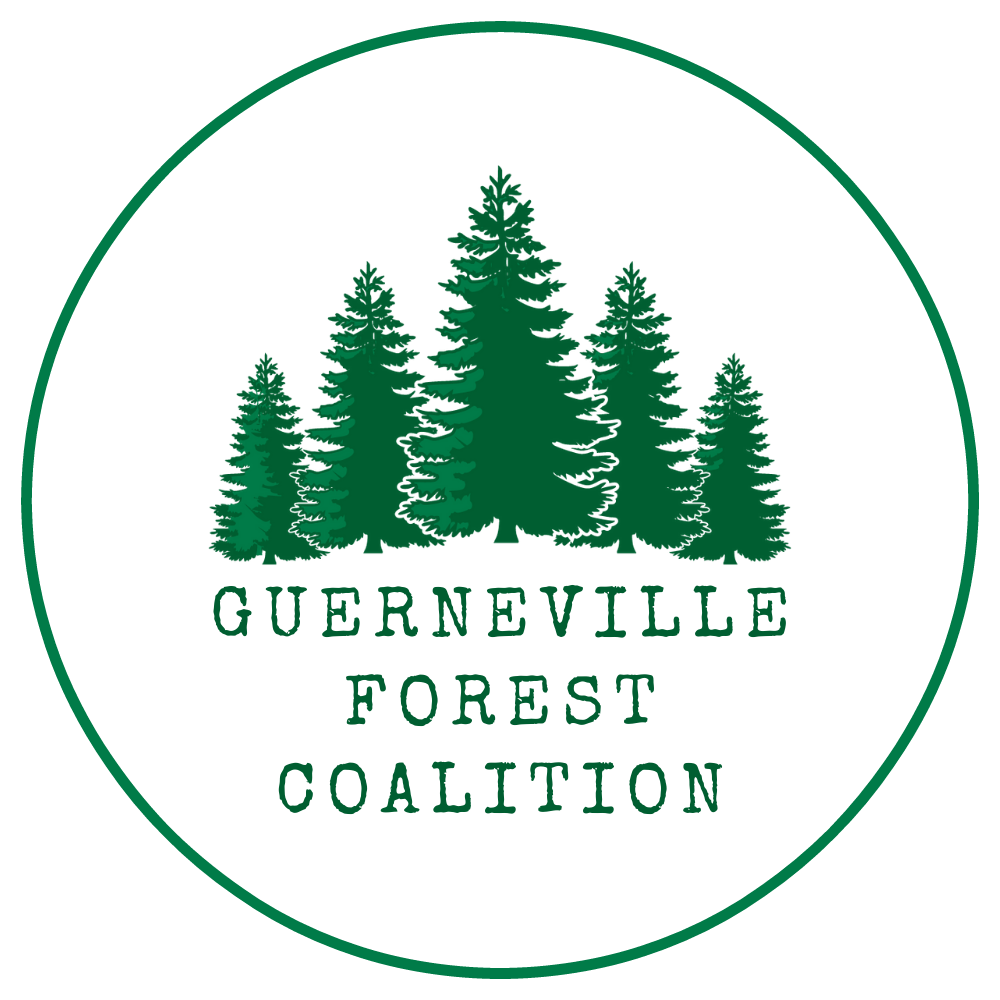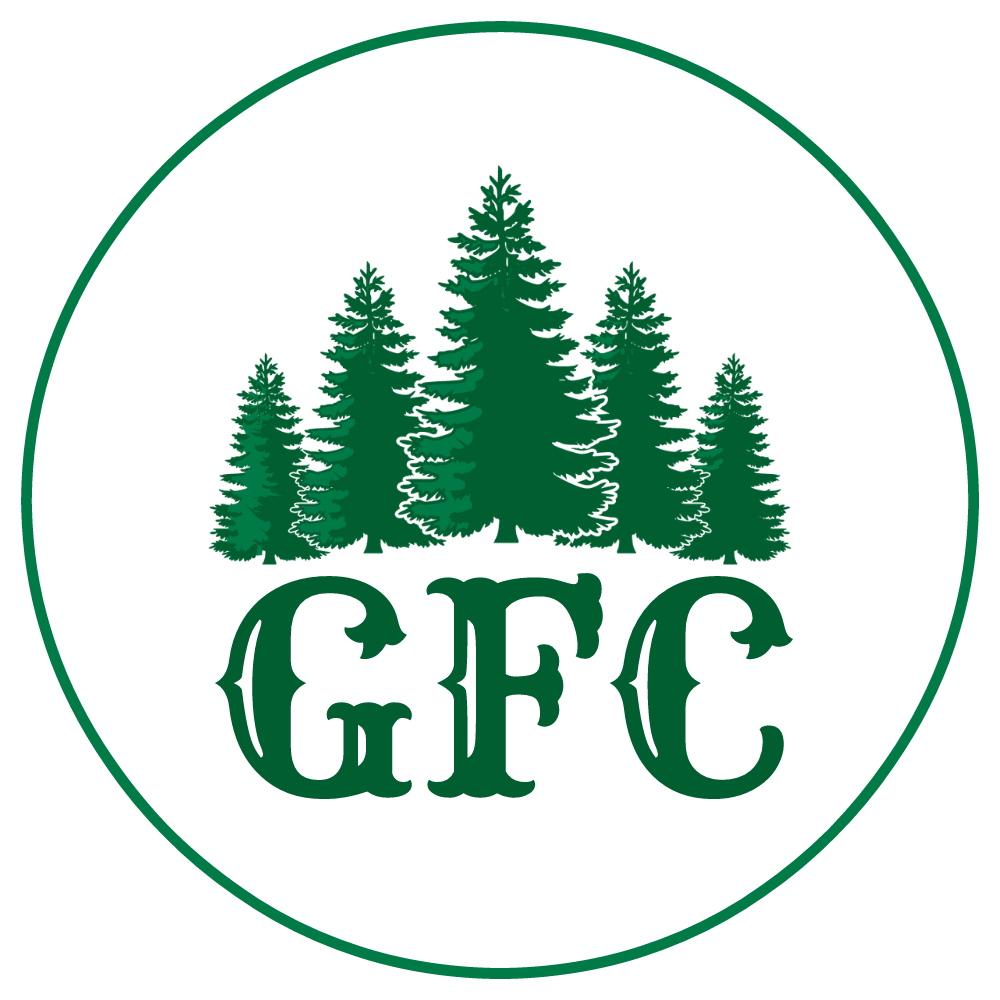
Frequently asked questions.
What is the Guerneville Forest Coalition?
The GFC is a group of neighbors, community members, businesses, and landowners concerned about the proposed 224-acre logging operation planned for Neeley Hill and the Silver Grove, only half a mile from Guerneville. Called the Silver Estates Timber Harvest Plan (THP# 1-20-00084-SON), the proposed logging is on land owned by the Burch family, who have many logging operations and a sawmill in northern California.
How is the GFC run?
Though the GFC includes nearly 300 interested citizens and donors who have written letters and donated time and money, it is run by a smaller working group of about 15 dedicated volunteers. If you are interested in joining our working group, please email us.
What are your administrative costs?
The GFC is run entirely by volunteers and our administrative costs are minimal. We pay our fiscal sponsor, Forest Unlimited, a small fee for accounting and bookkeeping services. We are currently anticipating future legal representation and are asking for donations to help cover those costs.
Is the GFC a tax exempt 501(c)3 organization? Is my donation tax deductible?
Yes, all donations are tax deductible. The GFC has a fiscal sponsor, Forest Unlimited, which is a 501(c)3 organization. Forest Unlimited provides us with accounting and bookkeeping services. Forest Unlimited’s website is here.
Isn’t the Silver Estates Timber Harvest Plan (THP) a way to reduce fire risk by thinning the forest?
No. This THP involves more than just thinning. It uses various types of logging, including single tree selection, group selection, and transition. Group selection is another term for mini clear cuts: areas up to 2.5 acres will be clear cut, leaving numerous gaps in the forest and destroying the ecosystem.
This THP will increase fire risk in at least five ways:
It involves chopping down large, fire-resistant Redwoods and Douglas Firs, which are the most profitable trees, while leaving behind the smaller, flammable brush species, like Tan Oaks and Bay Laurels.
lt will increase sun exposure, accelerating the growth of the combustible brush species.
It will leave behind many tons of logging “slash,” i.e. highly combustible branches and twigs from felled trees.
It removes 50-80 percent of the cooling forest canopy, which creates hotter, drier conditions on the forest floor.
It will remove the large trees that buffer the winds that spread fire.
Extensive research shows that commercial logging conducted under the guise of ‘thinning’ often makes wildfires spread faster and with greater intensity (Cruz et al. 2008, 2014).
Hasn’t Cal Fire reviewed the logging plan? Surely we can trust their decision?
Cal Fire’s expertise is fighting wildfires, not forest management. Its professionals are trained in forestry science, which views forests as crops to be managed for the extraction of wood products. Cal Fire creates its own timber harvest plans for State forests and it reviews private timber harvest plans to ensure they conform to the 1973 Forest Practice Rules. Unfortunately, these rules are woefully outdated and inadequate. They fail to take into account the latest in climate change and environmental science and were largely written by timber industry lobbyists.
Would it be possible to find an environmental group that might be willing to purchase the Silver Estates property, and to manage it responsibly?
There are many different stakeholders and interests involved in the timber industry in California. Some environmental groups try to work with timberland owners on different projects and avoid being antagonistic. We appreciate their need to manage their relationships carefully. While some groups have expressed interest in the Silver Estates property, they determined that it was too small for them to receive federal grant funding. We believe the purchase of a larger area (not just the areas slated for logging) is worth investigating.
If the area is not logged, the landowner might sell it for development. How will that protect the environment?
The area is zoned as timberland and, as such, cannot presently be used for other purposes, such as residential or business development. The GFC proposes that, under a conservation easement or purchase, the Silver Estates property and surrounding area be managed responsibly to reduce fire risk and promote a healthy forest. Ultimately, it could provide an incredible resource for hiking and forest ecology education.
Is forest protection a climate change solution?
Yes, it is just as important as ending fossil fuel consumption. The best available science indicates that, to effectively mitigate climate change, we must not only move beyond carbon fuel consumption, but must also substantially increase forest protection from logging; in fact, increased forest protection can account for half or more of our needed climate change mitigation while we quickly transition away from carbon fuel consumption (Erb et al. 2018).
Redwoods are especially efficient at removing carbon from the atmosphere and sequestering it indefinitely. When trees are cut, they immediately begin emitting their stored carbon. Thus, logging is a double whammy: it both eliminates carbon sequestration potential and it generates increased emissions. Additional carbon is then created by transporting and milling these giant trees.
What is the Sonoma County perspective?
Sonoma County sent a letter to Cal Fire stating that the “Silver Estates THP falls short of complying with a basic CEQA requirement.” CEQA is the California Environmental Quality Act and the County is concerned that, in its current form, the Silver Estates THP “does not adequately mitigate all of the potentially significant impacts of the proposed timber operations.”
What does Supervisor Lynda Hopkins think of the THP?
Like any politician, Supervisor Hopkins has been relatively non-committal given the many interests that she has to serve. She did tell the Press Democrat that aspects of the plan merit further investigation. For instance, she expressed concern that the historic, 2,000 year old Clar Tree needs to be better protected. We are actively working with Supervisor Hopkins’ office to ensure that she is made aware of all community concerns.

